直接掃描下方二維碼

以下文章來源于泉州 宋元中國世界海洋商貿中心 ,作者市申遺辦
泉州 宋元中國世界海洋商貿中心
泉州曾是10-14世紀世界海洋貿易網絡中高度繁榮的商貿中心之一,它作為宋元中國與世界的對話窗口,展現了中國完備的海洋貿易制度體系、發達的經濟水平以及多元包容的文化態度。 “宋元中國的世界海洋商貿中心”申遺工作有序推進,讓我們共同關注!
北京時間2021年7月25日17點 40分,在中國福建福州舉行的第44屆聯合國教科文組織世界遺產委員會會議上,中國申報的“泉州:宋元中國的世界海洋商貿中心”順利通過審議,成功列入《世界遺產名錄》。
至此,中國世界遺產項目增至56項,舉國同賀。
第44屆世界遺產大會于7月16日晚拉開序幕,作為此次中國唯一申報的世界文化遺產,泉州項目備受關注。在聯合國教科文組織中國全委會和國家文物局,省委、省政府的高度重視、全力支持、精心部署、統籌推進下;在國際、國內及省市專業機構和專家的專業支持下,攻堅克難,深入推進專題學術研究。市委、市政府高位推動,泉州市全市上下齊心協力、共同努力,“泉州:宋元中國的世界海洋商貿中心”終于傳來佳音,正式成為世界文化遺產。
一個遠離中原的邊陲之地
為什么會成為宋元時期的世界海洋貿易中心?
“保護好、傳承好、利用好這些寶貴財富,是我們的共同責任,是人類文明賡續和世界可持續發展的必然要求。”習近平總書記向第44屆世界遺產大會所致賀信中,深刻地闡明了世界遺產的重要地位和保護世界遺產的重大意義,也為泉州繼續做好世界遺產保護工作,指明了方向,提供了根本遵循。
“泉州:宋元中國的世界海洋商貿中心”一共由22處代表性遺產點組成,在闡述泉州作為10~14中國的世界海洋商貿中心的遺產價值上,具備高度的完整性與真實性。22處遺產點有18處國家級文保單位,4處省級文保單位,不僅記載著當時泉州的繁榮景象,也證實了一個由中央、本土和海外多元社群合力開創的特有的海外貿易體系,并造就了該時期世界海洋貿易與文化交流的輝煌。
「 九日山祈風石刻、市舶司遺址、德濟門遺址、天后宮、真武廟、南外宗正司遺址、泉州府文廟、開元寺、老君巖造像、清凈寺、伊斯蘭教圣墓、草庵摩尼光佛造像、磁灶窯址、德化窯址、安溪青陽下草埔冶鐵遺址、洛陽橋、安平橋、順濟橋遺址、江口碼頭、石湖碼頭、六勝塔、萬壽塔。」
宋元泉州:運輸網絡
△ 宋元泉州海外貿易的興盛,極大受益于其在水陸聯運交通網絡方面的飛躍式發展,由一系列橋梁、道路、碼頭、航標組合而成,并縱貫南北的沿海大通道,將泉州的區域內外連為一體。
古城遺產點風采
△ 22處遺產組成部分之間具有功能、空間、社會、文化上的緊密關聯,在推動泉州成為世界性的海洋貿易中心的進程上,構建了一個完備的體系,涉及制度保障、多元社群、城市結構、生產基地、運輸網絡、區域布局等完備的關聯鏈條。
泉州:宋元中國的世界海洋商貿中心
遺產點簡介及對整體價值的支撐
Quanzhou: Emporium of the World in Song–Yuan China
Brief Description of the Component Sites and Their Support of the Overall Value
第一組:制度保障+城市結構
Group One: Institutional Guarantee + Structure of the City
01 九日山祈風石刻
Jiuri Mountain Wind-Praying Inscriptions
◆ 九日山祈風石刻是一組記載宋代在泉州負責海外貿易管理的國家專員、地方官以及皇室成員等為海外貿易商舶舉行祈風儀式的摩崖石刻,反映出海神信仰對貿易活動的精神促進,體現了宋代市舶制度下國家力量對海洋貿易的倡導和管控。
—
These are Song Dynasty cliff inscriptions recording the prayer rituals for the safe voyages of ocean-going merchant ships. The ceremonies were held by state commissioners in charge of overseas trade, local officials and imperial clansmen. The inscriptions embody the spiritual impetus that the belief in sea deities provided for trade activities, and reflect the power of the state under the Song Dynasty’s maritime trade system to promote and manage maritime trade. ◆
02 市舶司遺址
Site of Maritime Trade Office
◆ 市舶司是宋元國家政權設置在泉州管理海洋貿易事務的行政機構。設置于1087年,標志著泉州正式成為開放的國家對外貿易口岸,對宋元泉州的經濟繁榮、文化交流以及海洋貿易各參與方的共同發展具有至關重要的意義。
—
This was an administrative agency established by the Song-Yuan national regimes in Quanzhou to manage maritime trade affairs. Its establishment in 1087 marked Quanzhou’s rise as a national hub of maritime trade, and was essential to Quanzhou’s economic prosperity and cultural exchanges, as well as the common prosperity of all participants in maritime trade. ◆
03 德濟門遺址
Site of Deji Gate
◆ 德濟門遺址是宋元泉州城的南門遺址,是進入城市南部商業區的交通要道,記錄了宋元泉州城市向南部拓展的歷史,體現了官方對海洋貿易和城市商業發展的行政保障。
—
This was the southern gate of the city of Song-Yuan Quanzhou, serving as the main access to the commercial district on the southern side of the city. It bears testimony to the history of Quanzhou’s southward expansion, reflecting the government’s administrative guarantee for the development of maritime trade and commerce within the city. ◆
04 天后宮
Tianhou Temple
◆ 天后宮是宋元時期起源于泉州本地的海神媽祖的祭祀建筑,也是世界范圍媽祖信仰的重要傳播中心,見證了媽祖信仰伴隨海洋貿易的形成和發展歷程,體現出民間信仰與國家意志相結合對海洋貿易發展的共同推動。
—
This temple is dedicated to the worship of the sea goddess Mazu, and is also a major center for the dissemination of Mazu belief around the world. It bears testimony to the formation and development of Mazu belief amid the rising maritime trade, revealing how folk beliefs and the will of the state worked in concert to advance maritime trade. ◆
05 真武廟
Zhenwu Temple
◆ 真武廟是宋元時期祭祀海神真武大帝的道教廟宇,也是古法石港的重要地標。其所承載的海神信仰是宋元時期商人群體從事海洋貿易的重要精神寄托,體現了政府對海洋貿易的鼓勵與推動。
—
This is a Taoist temple dedicated to the worship of the Great Emperor Zhenwu and used to be a major landmark within the ancient port of Fashi. The sea deity beliefs embodied by the temple was an important source of spiritual support for merchants who engaged in maritime trade during the Song-Yuan period. The temple reflects the government’s encouragement and support for maritime trade. ◆
第二組 多元社群+城市結構
Group Two: Multi-cultural Communities + Structure of the City
06 南外宗正司遺址
Site of the Southern Clan Office
◆ 南外宗正司是1130年以來遷居泉州的宋代皇族群體的管理機構,遺址所代表的宋代皇族群體是泉州世界性多元社群中具有影響力的組成部分。
—
This was an administrative agency established for the Song Dynasty imperial clansmen who relocated to Quanzhou in 1130 and thereafter. The imperial clansmen embodied by this site were the most influential part of Quanzhou’s cosmopolitan multi-cultural communities during the Song Dynasty. ◆
07 泉州府文廟及學宮
Site of the Southern Clan Office
◆ 泉州府文廟及學宮是儒家祭祀場所和泉州最高等級的教育機構,是包括政治要人和高級知識分子在內的泉州精英群體的象征,這些社會精英在宋元海洋貿易的推動和管理中發揮了重要作用。同時,建筑群的高規制反映了海洋貿易給泉州帶來的經濟和文化繁榮。
—
This was a place of worship for Confucius and the highest educational institution in Quanzhou, embodying Quanzhou’s intellectual and political elites. These social elites play a vital role in the promotion and administration of maritime trade during the Song and Yuan Dynasties. The high standard of the architectural complex reflects the economic and cultural prosperity that maritime trade brought to Quanzhou. ◆
08 開元寺
Kaiyuan Temple
◆ 開元寺是宋元泉州規模最大、官方地位最突出的佛教寺院,其寺院經濟及高規制的建筑、多元文化遺跡反映出宋元海洋貿易帶給泉州的經濟繁榮和文化共存特征。同時,與寺院關聯的宋元官方、僧侶、地方大族等人群對宋元社會經濟和海洋貿易具有重要貢獻。
—
This was the largest and highest government-sanctioned Buddhist temple in Song-Yuan Quanzhou. Its economic and multi-cultural relics, as well as its high architectural standard, reflect the economic prosperity and fusion of diverse cultures in Song-Yuan Quanzhou thanks to maritime trade. They also testify to the significant contributions of government officials, monks and powerful local clans to the city’s socio-economic development and maritime trade during the Song-Yuan period. ◆
09 老君巖造像
Statue of Lao Tze
◆ 老君巖造像是道家學說創始人老子的巨型石雕像,也是中國現存最大的道教石雕造像。老君巖是宋代泉州官方主流意識形態的象征,體現了泉州港口依托農業帝國的獨特歷史文脈,也反映出世界海洋貿易中心多元、活躍的文化特征和港口的繁榮成就。
—
This massive stone statue of Lao Tze, founder of Taoism, is China’s largest extant Taoist stone statue. It was a symbol of Quanzhou’s official mainstream ideology in the Song Dynasty. The statue reveals the unique historical context of Quanzhou as a port city sustained by the agricultural empire; it also embodies the flourishing diverse cultures in Quanzhou as a global maritime emporium, as well as the prosperity and achievements of the port. ◆
10 清凈寺
Qingjing Mosque
◆ 清凈寺是宋元時期跨越重洋來泉州營商的波斯、阿拉伯等地穆斯林商人及其族群的珍稀物證。見證了活躍在泉州的外國族群的文化、宗教和生活傳統,也見證了宋元泉州的人群匯聚、商貿往來和文化繁榮。
—
This mosque bears invaluable testimony to the presence of Muslim merchants from Persia and Arabia who traveled across the vast oceans to Quanzhou during the Song and Yuan Dynasties to engage in commerce. It stands as a testament to the culture, religion and lifestyles of foreign peoples that were active in Quanzhou during that time. They also serve as evidence of the population demographics, commerce and trade, and cultural prosperity of Song-Yuan Quanzhou. ◆
11 伊斯蘭教圣墓
Islamic Tombs
◆ 伊斯蘭教圣墓是7世紀來到泉州的兩位伊斯蘭教圣徒的墓地。墓地于1322年進行了修繕,與清凈寺共同見證了穆斯林商人及其族群在泉州的活動,反映了宋元泉州多元文化的交往與融合。
—
These are the resting places of two Muslims who reached Quanzhou in the 7th century AD. They were renovated in 1322. Together with Qingjing Mosque, they bear testimony to the activities of Muslim merchants and their ethnic groups in Quanzhou during the Song and Yuan Dynasties, embodying the interchange and fusion of diverse cultures in the city during that era. ◆
12 草庵摩尼光佛造像
Statue of Mani in Cao’an Temple
◆ 草庵摩尼光佛造像是宋元泉州摩尼教傳播的重要史跡,顯現出世界海洋貿易中心強大的文化包容力,其蘊含的文化融合特征為宋元泉州世界性多元社群間廣泛的價值觀交流奠定了基礎。
—
This is a major monument testifying to the dissemination of Manichaeism in Song-Yuan Quanzhou. It displays the extraordinary cultural inclusiveness of Quanzhou as a global maritime emporium. The fusion of diverse cultures embodied by this statue laid the foundation for the broad exchange of values among the cosmopolitan multi-cultural communities in Song-Yuan Quanzhou. ◆
第三組 商品產地
Group Three: Production Sites
13 磁灶窯址(金交椅山窯址)
Sites of Cizao Kilns (Jinjiaoyi Hill Kilns)
◆ 磁灶窯址(金交椅山窯址)是宋元時期泉州城郊外銷瓷窯址的杰出代表,反映了泉州以外貿手工業為顯著特點的產業結構,其生產體系和生產規模展現了世界海洋貿易中心強大的基礎產業能力和貿易輸出能力。
—
These are outstanding examples of the export-porcelain kiln sites that dotted the outskirts of Quanzhou in the Song-Yuan era. They demonstrate the prominence of craft production for export in the industrial structure of Quanzhou as the emporium of the world in Song-Yuan China. The system and scale of production seen in these kilns stand as a testament to Quanzhou’s remarkable capacity for production and overseas trade. ◆
14 德化窯址(尾林-內坂窯址、屈斗宮窯址)
Sites of Dehua Kilns (Weilin-Neiban Kilns and Qudougong Kiln)
◆ 德化窯址(尾林-內坂窯址、屈斗宮窯址)是宋元時期泉州內陸地區外銷瓷窯址的杰出代表,德化窯在發展過程中創燒出獨特的白瓷產品,展現了宋元泉州強大的基礎產業能力和貿易輸出能力,也顯示出海洋貿易推動下泉州本地制瓷產業的創新和發展。
—
These are outstanding examples of Song-Yuan Quanzhou’s hinterland kilns that produced porcelain wares for export. Their rise benefited from the flourishing maritime trade in Quanzhou during that period. Over the course of their growth, Dehua Kilns developed the techniques of firing unique white porcelain products. These sites demonstrate Song-Yuan Quanzhou’s remarkable capacity for production and overseas trade, and embody the innovation and development of Quanzhou’s local porcelain production industry driven by maritime trade. ◆
15 安溪青陽下草埔冶鐵遺址
Xiacaopu Iron Production Site of Qingyang Village in Anxi
◆ 安溪青陽下草埔冶鐵遺址是宋元時期泉州冶鐵手工業的珍貴見證,其所在的青陽村曾是宋代官方設立的專職鐵場之一,它與泉州的陶瓷生產基地共同展現了宋元泉州強大的產業能力和貿易輸出能力,同時顯示出宋元泉州海洋貿易對泉州內陸腹地經濟發展的積極作用。
—
This site bears invaluable testimony to the iron production industry in Song-Yuan Quanzhou, with Qingyang Village being the location of one of the dedicated iron plants set up by the government in the Song Dynasty. Together with Quanzhou’s porcelain production bases, the site demonstrates Song-Yuan Quanzhou’s remarkable capacity for production and overseas trade, and reflects the positive effect of maritime trade on inland Quanzhou’s economic development. ◆
第四組 運輸網絡
Group Four: Transportation Network
16 洛陽橋
Luoyang Bridge
◆ 洛陽橋位于泉州洛陽江入海口,是泉州北上福州乃至內陸腹地的交通樞紐,在泉州運輸網絡的發展中具有開拓性的里程碑意義。是官方主導、全民合力建造大型交通設施的典范,體現了官方、僧侶等社會各界對商貿活動的推動和貢獻。其建造技藝更是代表了當時中國最先進的造橋技術,為宋元時期泉州造橋浪潮積累了寶貴的技術經驗。 ◆
—
Situated at the estuary of the Luoyang River, this bridge was a transportation hub connecting Quanzhou northwards to Fuzhou and the nation’s vast heartland. It was a pioneering project and a significant historical milestone in the development of Quanzhou’s water-land transportation network. The bridge is a classic example of large-scale infrastructure facilities whose construction was organized by the government and involved the concerted efforts of the entire society. It reflects the efforts of all segments of society, including officials and monks, to facilitate and contribute to commercial and trade activities. The bridge represented the pinnacle of bridge-building technology in Song-Yuan China, and during its construction, a wealth of precious technical experience was accumulated for the subsequent bridge-building boom in Quanzhou. ◆
17 安平橋
Anping Bridge
◆ 安平橋是泉州與廣闊的南部沿海地區的陸運節點,體現出海洋貿易推動下泉州水陸轉運系統的發展。橋長約2255米,是中國現存最長的跨海梁式石橋。
—
This bridge was the node of land transportation between Quanzhou and the vast coastal region in southern China. It reflects the way maritime trade spurred on the development of Quanzhou’s water-land transshipment system. Stretching about 2,255 meters, it is China’s longest extant flat-beam sea-crossing stone bridge. ◆
18 順濟橋遺址
Site of Shunji Bridge
◆ 順濟橋遺址是泉州古城與晉江南岸的陸運節點,是伴隨海洋貿易發展而建設的出入古城商業區的主要通道,見證了商業拓展對交通系統的促進,加強了泉州城與南部平原丘陵和碼頭區的陸運聯系。
—
This bridge was the node of land transportation between the ancient city of Quanzhou and the southern bank of the Jinjiang River. Built amid the rising maritime trade, it was the main access to the ancient commercial district in Quanzhou. The bridge strengthened the land transport links between the city of Quanzhou and the southern plains, hills and dock areas. It reflects the improvement of the transportation system thanks to the growth of commerce. ◆
19 江口碼頭
Estuary Docks
◆ 江口碼頭是泉州內港法石港的珍貴遺存,是城郊連接古城的水陸轉運節點,現保存有文興、美山兩處宋元時期的碼頭及一處宋代古船遺址。
—
These are precious historical remains of Fashi Port, an inner port of Quanzhou. They were the node of water-land transshipment connecting the outskirts to the ancient city. Two Song-Yuan docks – Wenxing and Meishan – are preserved, along with the site of a Song Dynasty ship. ◆
20 石湖碼頭
Shihu Dock
◆ 石湖碼頭是一處利用天然礁石建造的碼頭,其主體由一組近岸礁石和通濟棧橋組成,是泉州外港碼頭的珍稀物證,實證了宋元泉州優良的建港條件。它與江口碼頭共同呈現了宋元泉州港的水陸轉運系統。
—
This dock utilized natural reefs in its construction, comprising a group of reefs near the shore and Tongji Jetty. It is an invaluable piece of physical evidence of Quanzhou’s outer port docks, testifying to the fact that conditions in Song-Yuan Quanzhou were extremely conducive to port construction. This dock, together with Estuary Docks, demonstrates Song-Yuan Quanzhou’s water-land transshipment system. ◆
21 六勝塔
Liusheng Pagoda
◆ 六勝塔位于泉州灣中部石湖半島北端的金釵山上,是石湖港的重要歷史遺存,是商舶由泉州灣主航道駛向內河港口的地標,并有護佑商旅的作用。
—
Standing atop Jinchai Hill at the northern end of Shihu Peninsula in the middle of Quanzhou Bay, this pagoda is an important historical site at Shihu Port that marked where merchant ships would shift course from the main shipping line in Quanzhou Bay to the inner ports. It is believed to provide divine protection for traveling merchants. ◆
22 萬壽塔
Wanshou Pagoda
◆ 萬壽塔位于泉州城東南方向20公里的寶蓋山巔,這里控扼泉州灣與外海交界處,在此建塔鎖水口以保平安。萬壽塔既是商船抵達泉州港的地標,也是鎮守海口、護佑商旅的精神寄托。
—
Standing atop Baogai Hill 20km southeast of the city of Quanzhou, this pagoda overlooks the place where the Bay of Quanzhou meets the outer sea. Building a pagoda in such a location was believed to be able to lock the water outlet and ensure safety. The pagoda was the landmark for merchant ships arriving at the port of Quanzhou; it also served as a source of spiritual support for the local population by guarding the bay and providing divined protection for travelling merchants. ◆
攝影:成冬冬 陳英杰 張濤 王俊 陳曉東 鄭永集 廖富魁 鄭文桂 陳起拓
來源:泉州 宋元中國世界海洋商貿中心
泉州市文化廣電和旅游局
海絲泉州文旅之聲
【泉州:宋元中國的世界海洋商貿中心】“世界的古城·活著的古城”歡迎您~

¥3299起1泰國曼谷、芭提雅雙飛五日游*尚品泰國
¥2380起2泰國曼谷+芭提雅+金沙雙島出海美食經典6日游*泰有魅力
¥918起3泉州到武夷山高鐵三日游
¥273起5莆田湄洲島、媽祖文化園祈福一日游
¥1999起6「中班機」泉州普陀山飛機3日游SC
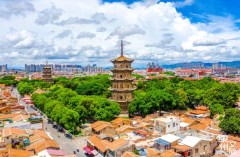
泉州三日游怎么玩?經典游攻略 來自:泉州
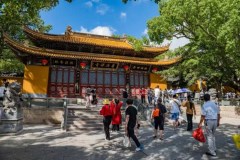
普陀山三日游攻略 來自:泉州寶中旅行社
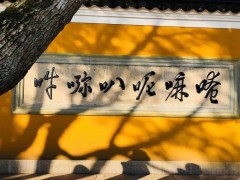
中國四大佛教名山求什么最靈? 來自:建筑史學
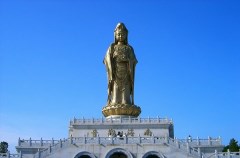
想到了就去普陀山,超全拜佛攻略 來自:普陀山
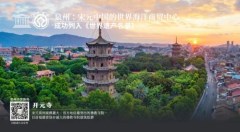
世遺圖鑒:閱盡千年泉州 來自:海絲泉州文旅之聲

泉州半城煙火半城仙,難忘故鄉一抹紅 來自:海絲泉州文旅之聲